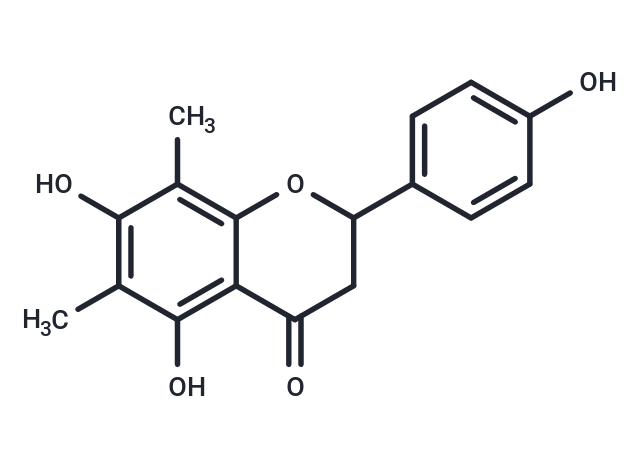 Your shopping cart is currently empty
Your shopping cart is currently empty

1. Farrerol has antioxidative activity.2. Farrerol modulates TAP and BNBD5 gene expression in mammary gland, enhances bMEC defense against S. aureus infection and could be useful in protection against bovine mastitis. 3. Farrerol inactivates KEAP-1 or activates the Akt, p38 and ERK to facilitate the release of Nrf2 from Keap1 and subsequent reduces the intracellular production of reactive oxygen species via the induction of HO-1 expression. 4. Farrerol has protective effects against H2O2-induced apoptosis in EA.hy926 cells, and suggests that Farrerol is a potential candidate for the intervention of endothelial-injury-associated cardiovascular diseases.

| Pack Size | Price | USA Warehouse | Global Warehouse | Quantity |
|---|---|---|---|---|
| 2 mg | $36 | In Stock | In Stock | |
| 5 mg | $54 | In Stock | In Stock | |
| 10 mg | $77 | In Stock | In Stock | |
| 25 mg | $123 | In Stock | In Stock | |
| 50 mg | $179 | In Stock | In Stock | |
| 100 mg | $266 | - | In Stock | |
| 200 mg | $395 | - | In Stock | |
| 1 mL x 10 mM (in DMSO) | $65 | In Stock | In Stock |
| Description | 1. Farrerol has antioxidative activity.2. Farrerol modulates TAP and BNBD5 gene expression in mammary gland, enhances bMEC defense against S. aureus infection and could be useful in protection against bovine mastitis. 3. Farrerol inactivates KEAP-1 or activates the Akt, p38 and ERK to facilitate the release of Nrf2 from Keap1 and subsequent reduces the intracellular production of reactive oxygen species via the induction of HO-1 expression. 4. Farrerol has protective effects against H2O2-induced apoptosis in EA.hy926 cells, and suggests that Farrerol is a potential candidate for the intervention of endothelial-injury-associated cardiovascular diseases. |
| Molecular Weight | 300.31 |
| Formula | C17H16O5 |
| Cas No. | 24211-30-1 |
| Smiles | Cc1c(O)c(C)c2OC(CC(=O)c2c1O)c1ccc(O)cc1 |
| Relative Density. | 1.391g/cm3 |
| Color | White |
| Appearance | Solid |
| Storage | Powder: -20°C for 3 years | In solvent: -80°C for 1 year | Shipping with blue ice/Shipping at ambient temperature. | |||||||||||||||||||||||||||||||||||
| Solubility Information | Chloroform, Dichloromethane, Ethyl Acetate, Acetone, etc.: Soluble DMSO: 245 mg/mL (815.82 mM), Sonication is recommended. | |||||||||||||||||||||||||||||||||||
| In Vivo Formulation | 10% DMSO+40% PEG300+5% Tween 80+45% Saline: 2 mg/mL (6.66 mM), Sonication is recommended. Please add the solvents sequentially, clarifying the solution as much as possible before adding the next one. Dissolve by heating and/or sonication if necessary. Working solution is recommended to be prepared and used immediately. The formulation provided above is for reference purposes only. In vivo formulations may vary and should be modified based on specific experimental conditions. | |||||||||||||||||||||||||||||||||||
Solution Preparation Table | ||||||||||||||||||||||||||||||||||||
DMSO
| ||||||||||||||||||||||||||||||||||||
| Size | Quantity | Unit Price | Amount | Operation |
|---|

Copyright © 2015-2025 TargetMol Chemicals Inc. All Rights Reserved.